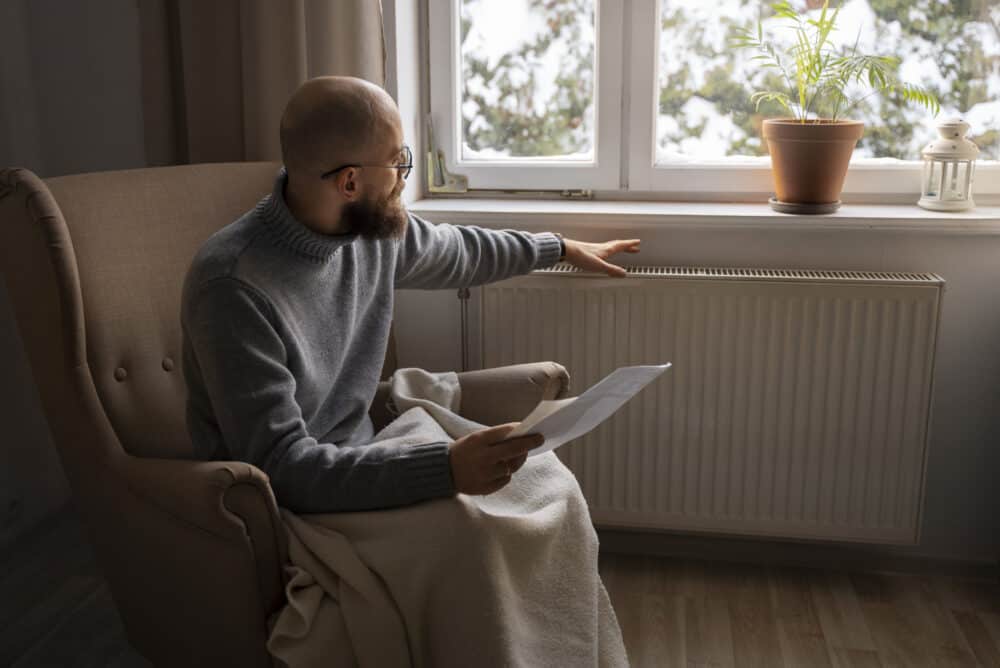Radiator Bleeding Can Revive Your Heating System
Table of Contents
A simple process called Radiator Bleeding can revive a cold Radiator, a classic sign of trapped air is hot water at the bottom and cold spots at the top. When air bubbles form in your hot water system, it prevents the proper flow of hot water, reducing the efficiency of your central heating system. Here’s how to do it using simple steps and a few basic tools you can find at hardware stores.
Essential Tools Required

- Radiator Key or Flathead Screwdriver
- Small container or old Towel to catch water
- Cloth for cleaning up
Step 1: Turn Off Your Heating System

Ensure the hot water system is off and the radiators are cool. Working on an active heating system is dangerous, especially with steam radiators or baseboard heaters. It’s a good idea to wait for them to cool down completely.
Step 2: Locate the Bleed Valve
Look for the small valve or bleed screw located at the top of the radiator or on the side. In older systems, it may be near the top floor or upper floor radiators. This air vent is where the excess air will escape.
Step 3: Open the Bleed Valve

Using your Radiator Key (or flathead screwdriver if the valve is slotted), slowly turn the bleed valve counterclockwise. You’ll immediately hear a hissing sound, which means air pockets are being released. The moment water flow begins, or a steady stream of water appears, the bleeding process is complete for that radiator.
Step 4: Close the Valve Once Air Escapes
Once you notice a little bit of water coming out, close the valve by turning it clockwise. Be sure to tighten it properly to avoid small leaks. Wipe up any water with a cloth or old towel.
Step 5: Check Your Boiler Pressure
After bleeding, it’s common for the Boiler’s pressure to drop, especially in older systems. Check the pressure gauge on your hot water boiler. If needed, use the filling loop to restore the pressure to the correct level. If you’re unsure, consult the manual or ask a heating engineer.
Step 6: Repeat the Process on Other Radiators
Bleeding is an essential task for maintaining the efficiency of your heating system. Repeat the process for any other cold radiator, starting with the ones on the lowest floor and working your way up. Downstairs radiators typically need this more frequently due to air bubbles rising in the system.
Additional Tips
- For towel rails or thermostatic radiator valves (TRVs), make sure they are open fully during bleeding.
- If you notice much air or cold spots persisting, you may need to bleed more radiators.
- Consider doing annual bleeding at the start of the winter months to prevent significant problems.
- Monitor your heating bills—a well-maintained heating system reduces energy consumption and costs.
When to Seek Professional Help

If your Boiler pressure remains low after bleeding, or if your hot water system has small leaks or other issues, it may be time to call a heating engineer. In some cases, installing an automatic bleeder or checking for issues like a faulty pressure relief valve or expansion tank can help.
Conclusion
Bleeding your radiator is a straightforward yet essential maintenance task that can significantly improve the efficiency of your heating system. Regularly checking and bleeding your radiators not only enhances comfort but also contributes to energy savings and prolongs the life of your heating system. Make this task a part of your seasonal home maintenance routine. Take charge of your home’s warmth today—grab a radiator key and start bleeding those radiators!



